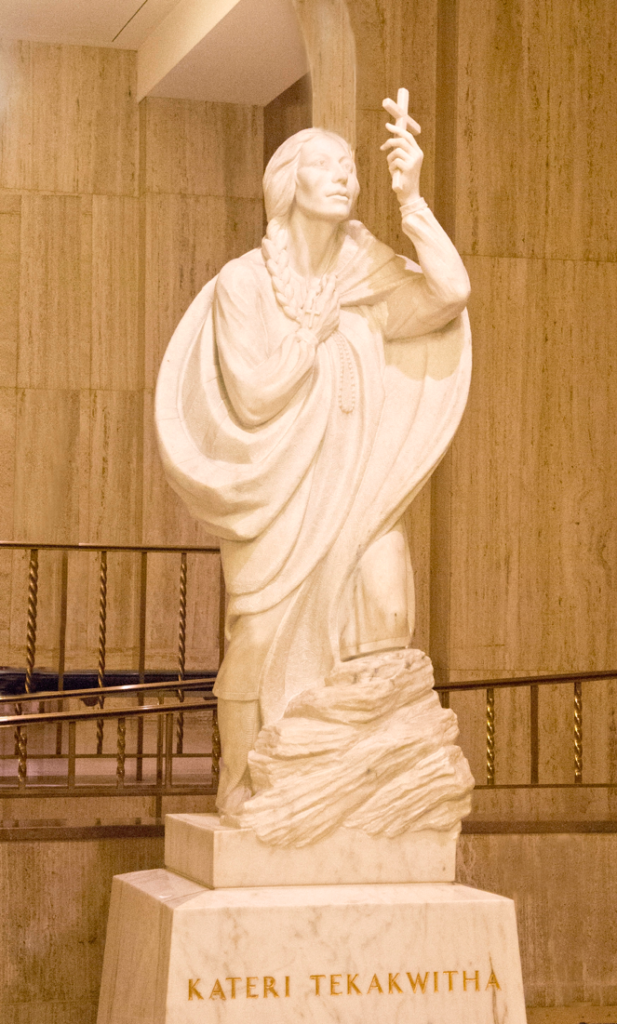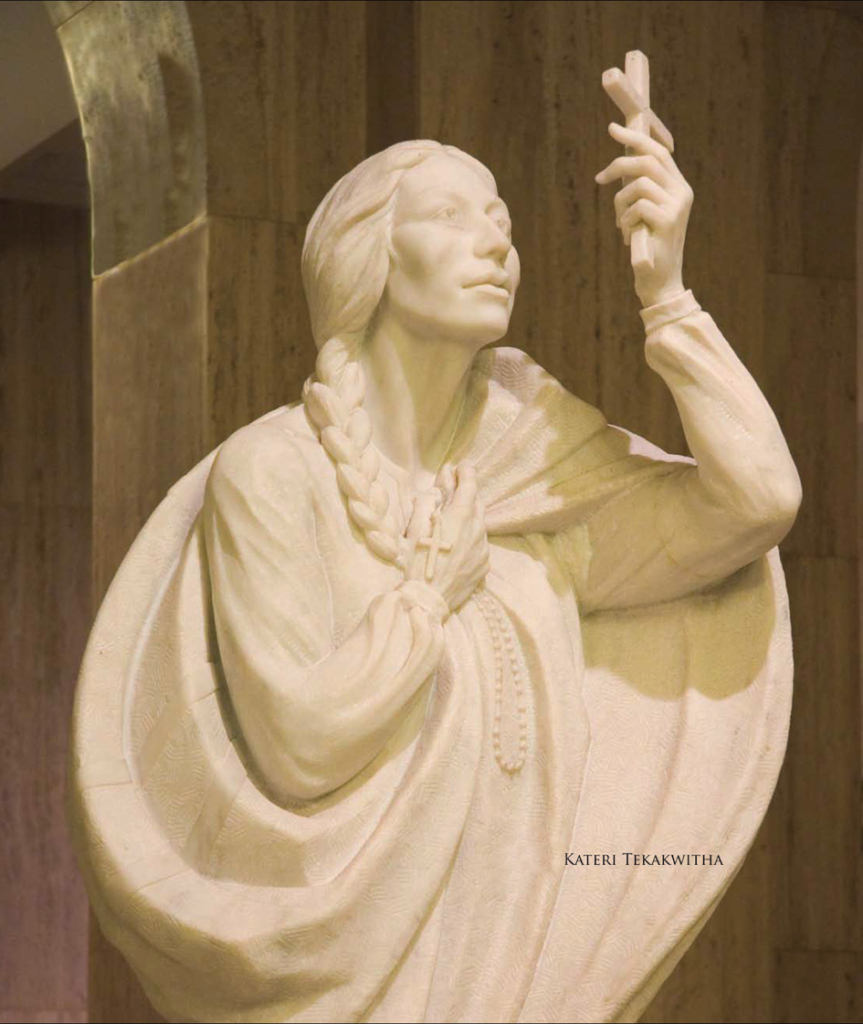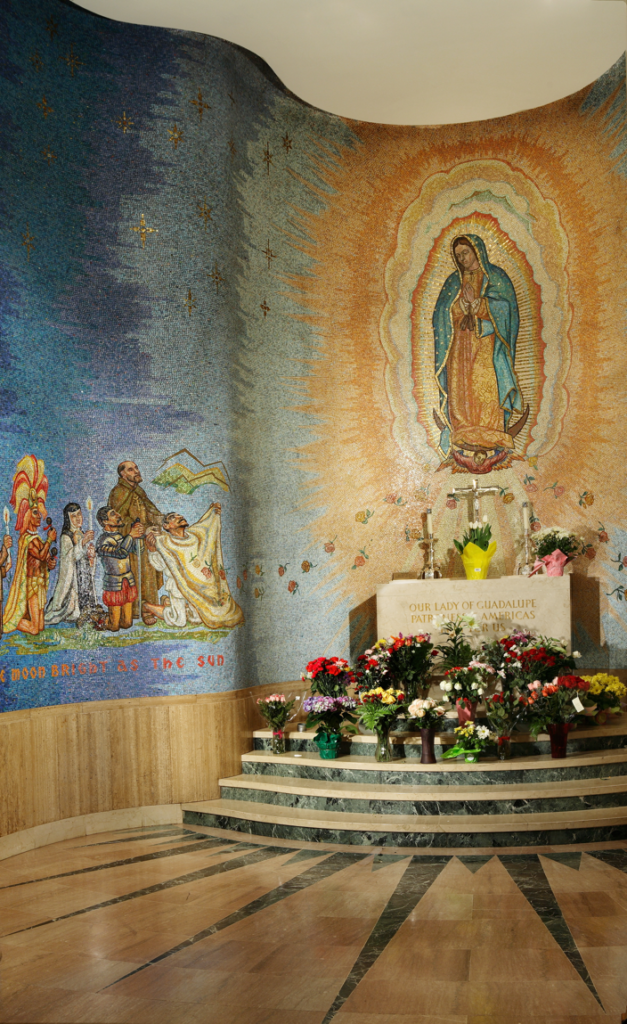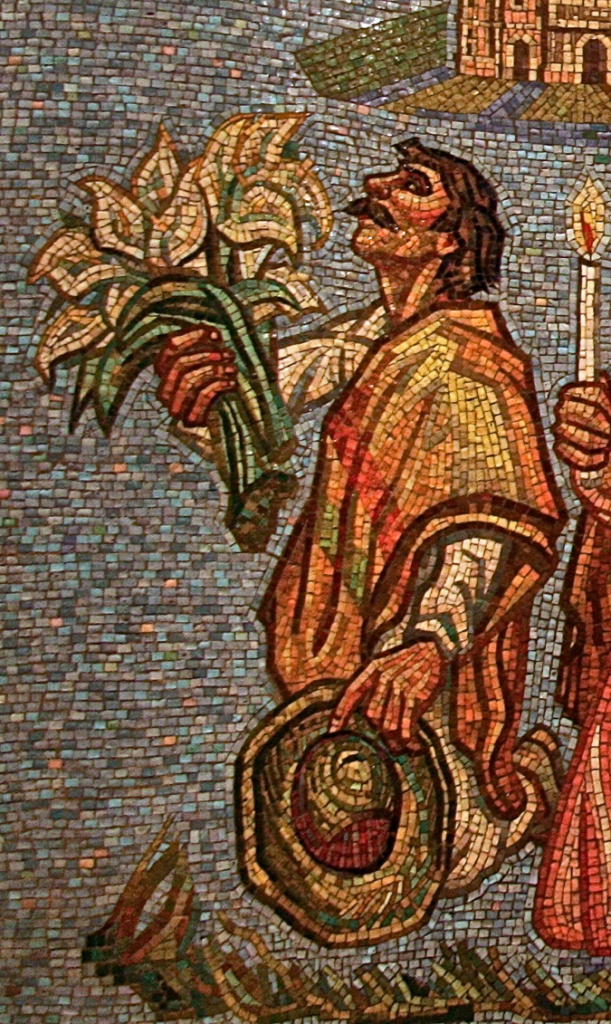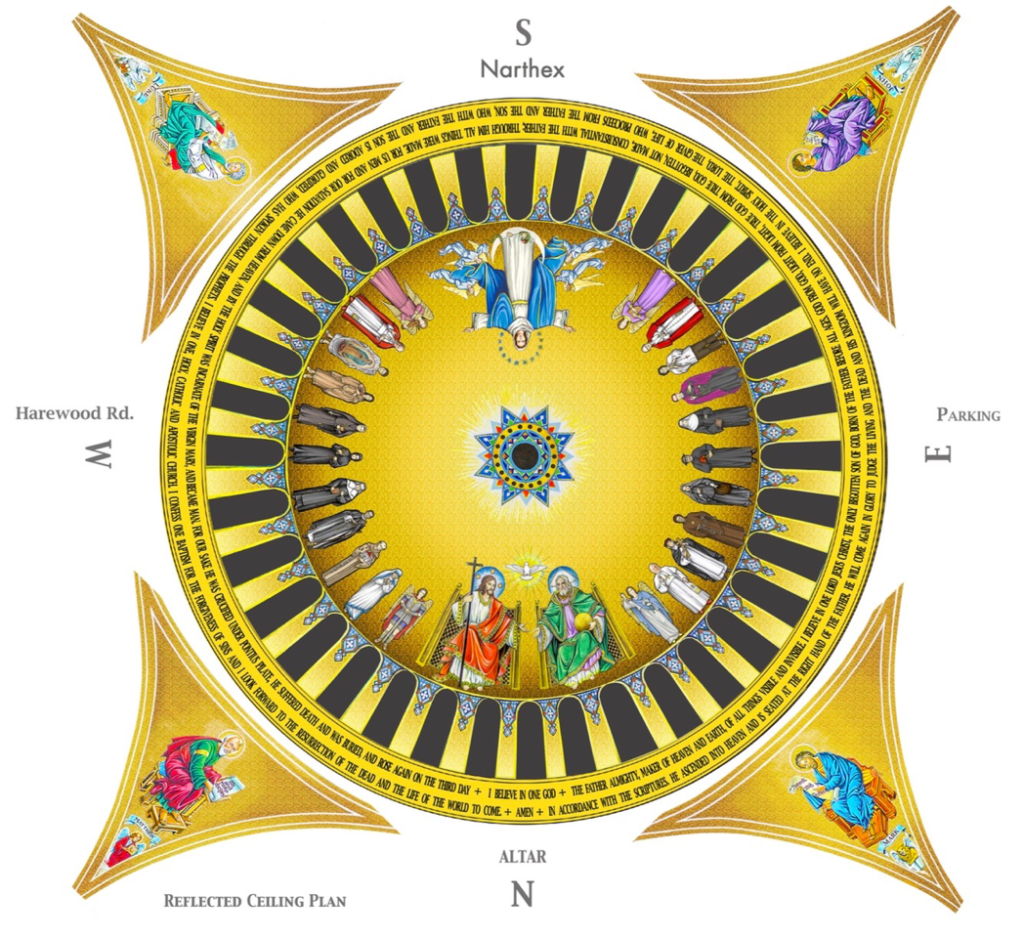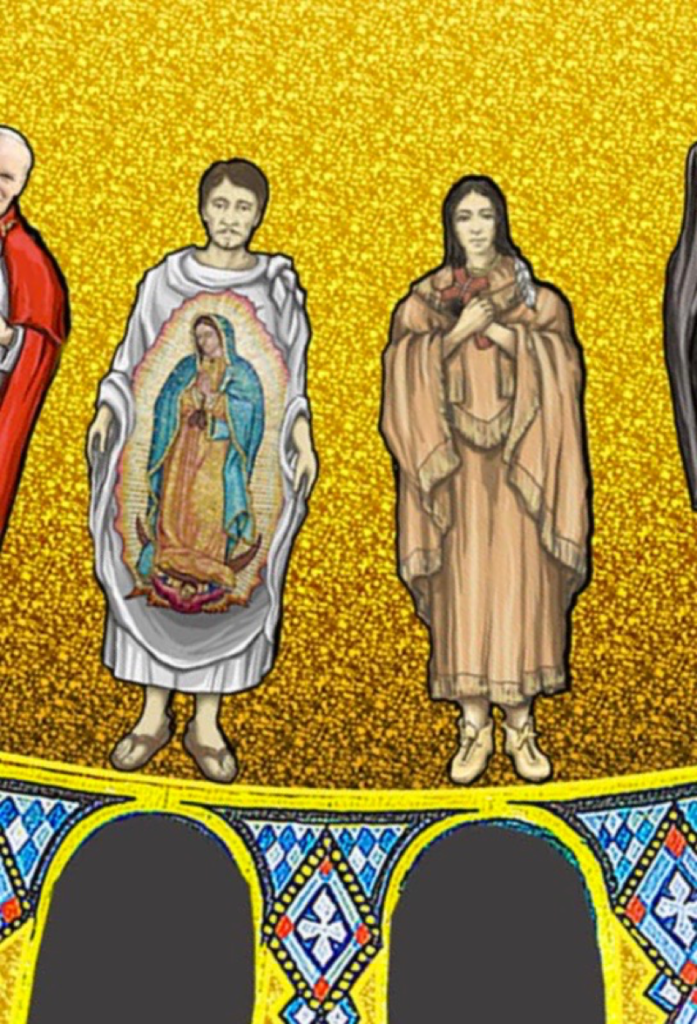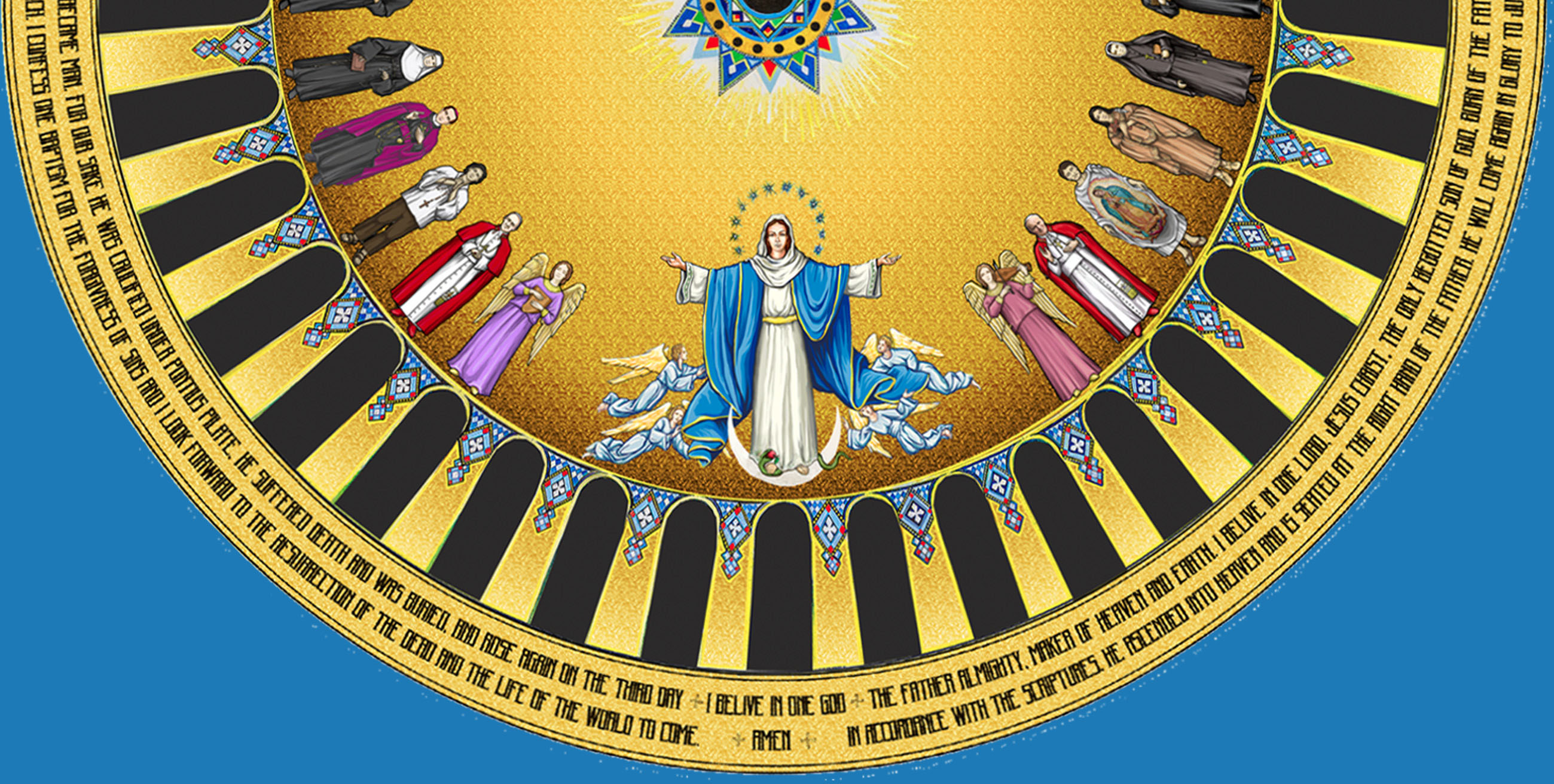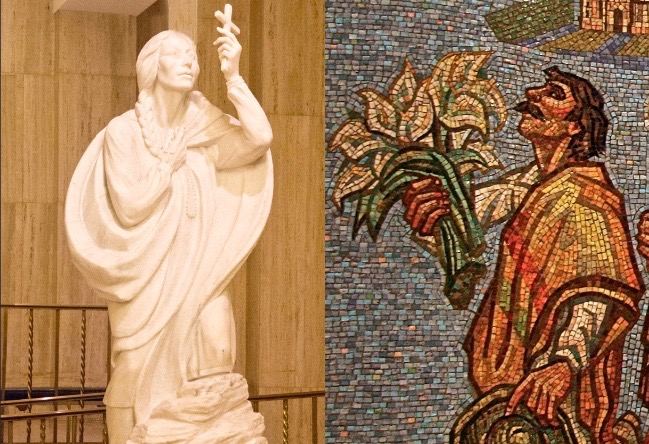
With the completion of the Trinity Dome mosaic, the Basilica of the National Shrine of the Immaculate Conception will be finished according to the original design. The mosaic will depict the Most Holy Trinity, the Blessed Virgin Mary as the Immaculate Conception, the Nicene Creed, and the four Evangelists. One of the most striking elements of the dome is the diverse depiction of saints who have a special association with the United States and the National Shrine. Among the saints are two of North America’s most iconic indigenous saints: St. Kateri Tekakwitha and St. Juan Diego.
Not only are these saints widely recognized and revered by Catholics across America, but they collectively represent unique areas and aspects of the United States. It is a beautiful acknowledgement that the “Crowing Jewel” of the Shrine has come about through the work of a nation!
St. Kateri Tekakwitha: Lily of the Mohawks
Kateri Tekakwitha, posthumously known as the “Lily of the Mohawks”, was born around the year 1656 in the Mohawk village of Ossernenon, which is located somewhat west of modern-day Auriesville, New York. As a young child, she contracted smallpox along with the rest of her family. Although she survived, her family died, and she was left with terrible scarring, especially on her face.
At the age of nineteen, she converted to Roman Catholicism, taking a vow of perpetual virginity and mortification of the flesh. After undergoing considerable persecution from her tribe for her choice, she fled her village to live at the Jesuit mission village of Kahnawake, which was situated south of Montreal, Canada. Five years later, after struggling through multiple illnesses, she passed away at the age of 24. Upon her death, witnesses claim that her scars faded away and her face appeared radiant and beautiful. To date, many miracles are attributed to her intercession.
St. Kateri Tekakwitha is the first Native American to be venerated in the Roman Catholic Church. Furthermore, she has strong ties to the Basilica, as she was beatified in 1980 by Pope John Paul II, who visited the Shrine on during his papacy.
St. Juan Diego: First American Indigenous Saint
Born in Mexico in 1474, St. Juan Diego holds a special title, the ‘First American Indigenous Saint’, making him a primary choice for the procession of saints to be depicted in the Trinity Dome.
In December 1531, Juan Diego received four apparitions of the Blessed Virgin Mary on Tepeyac Hill, an area which is now encompassed by Mexico City. Each time the Blessed Virgin appeared, she asked him to send Bishop Zumarraga her request to have a church built on the hill in her honor. Upon being presented with the request, the bishop was filled with doubts, which prompted him to request proof of both the apparitions and the request. Upon hearing the bishop’s message, the Blessed Mother promised Juan Diego that she would procure a miracle for the bishop on December 11 of that year.
On that designated day, she asked Juan Diego to climb Tepeyac Hill in order to collect the flowers which grew there. He obeyed, and found thousands of beautiful roses blooming, despite it being in the dead of winter. He filled his tilma with flowers and returned to Mary, who then arranged them in his tilma with her own hands. Upon finishing, she told him to present them to the bishop.
When he arrived at the bishop’s house, Juan Diego opened his tilma to reveal the roses, which the bishop recognized were of Spanish origin, and did not grow in the Americas. However, more miraculous than that was the striking resemblance of the Blessed Virgin Mary imprinted on Juan Diego’s tilma, which had held the flowers touched by the Blessed Mother. His doubts removed, the bishop conceded to carry out the Blessed Mother’s request.
The bishop first kept Juan Diego’s imprinted cloak in his private chapel, but then placed it on public display in the church built on Tepeyac Hill the next year. The church, named the Basilica of Guadalupe, is now one of the world’s major center of pilgrimage for Roman Catholics, receiving 20 million visitors annually.
In 2002, Juan Diego was canonized by Pope John Paul II. Both his title of ‘First Indigenous American Saint’, and his beautiful connection with Mary made him a prime choice for the Trinity Dome.
Tribute to the Universality of Catholicism
The Trinity Dome’s tribute to two of America’s most iconic saints – St. Kateri Tekakwitha and St. Juan Diego – is fitting, as the National Shrine is America’s Catholic Church.
In the words of Pope John Paul II, the first reigning Pope to visit the National Shrine, during his visit to America’s Catholic Church:
“This Shrine speaks to us with the voice of all America, with the voice of all the sons and daughters
of America, who have come here from the various countries of the Old World. When they came, they brought with them in their hearts the same love for the Mother of God that was characteristic of their ancestors and of themselves in their native lands. These people, speaking different languages, coming from different backgrounds of history and traditions in their own countries, came together around the heart of a Mother they all had in common. While their faith in Christ made all of them aware of being one People of God, this awareness became all the more vivid through the presence of the Mother in the work of Christ and the Church.” (October 7, 1979)

